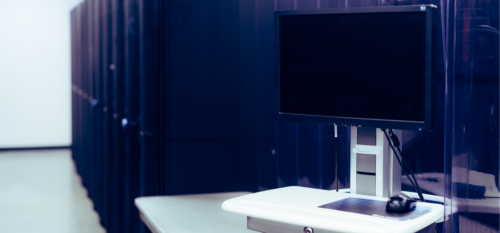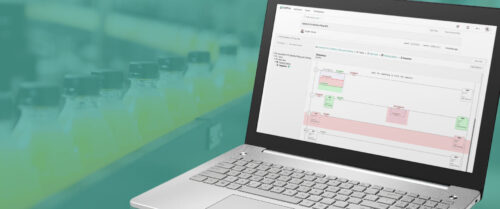50, 25, 10 years ago – 2004-02-01
This page offers a look back on a variety of interesting items from Control Engineering's past issues, highlighting content from 50, 25, and 10 years ago. September 1954 Supermarket computer calculates correct change No longer does the supermarket clerk have to depend on mental or pencil-and-paper arithmetic to determine the amount of change due a customer.
This page offers a look back on a variety of interesting items from Control Engineering ‘s past issues, highlighting content from 50, 25, and 10 years ago.
September 1954
Supermarket computer calculates correct change
No longer does the supermarket clerk have to depend on mental or pencil-and-paper arithmetic to determine the amount of change due a customer. This job is done for him now by a new cash register recently introduced by the National Cash Register Co.
This “computer” not only gives the customer a printed record of the individual item cost and total order cost, but also lists the denomination of the check or bill given in payment and the change the customer should get.
Such items as bottles returned for refund or coupons offered for credit are rung up on the register, which automatically lists and subtracts these amounts from the total of the customer’s purchase. If the payment offered by the customer is too small, the machine indicates how much money the customer owes instead of the change that is due. For visual checking, all the figures are displayed on the register as they are listed. All this machine needs is a sign that pops up and says “tilt” when somebody tries to pass a counterfeit bill.
February 1979
Report pessimistic about fiber optics market
New York, N.Y. — In another Frost & Sullivan report, the market research company warns that a profitable boom in fiber optics is more than a decade away. The 211-page study entitled, “Fiber Optic Technology and Markets” states: “The already crowded field will be characterized by poor return on investments.”
Not that the study predicts the market will stagnate. On the contrary, over the next 10 years, F&S expects fiber optic shipments to increase more than 5-fold from $11 million in 1978 to $60 million by 1987. The total, however, is small when compared to either market projections by others or the market values of alternative technologies that proponents of fiber optics hope to displace.
According to the study, technical problems in particular hold back commercial implementation of fiber optic systems. The study claims virtually “every component area poses serious limitations.” Among those mentioned, the most problematic were considered light sources, because of their short life, and connectors, because of the high precision and stability needed for fiber end alignment.
February 1994
Consulting Editor Byron K. Ledgerwood, in a column called “Trends: What a Change,” observes the expanding need for engineering services. “Those of you who have been around the industrial control business for a substantial period can remember when there was no such thing as paying for system engineering services… Customers who needed help putting control hardware to work were given application assistance gratis by the supplier. Expenses were spread over all hardware, and customers paid a hidden cost for this assistance whether it was needed or not…. The control system integrator population, as systems houses are known today, really began to explode as the use of programmable logic controllers accelerated. Money saving cutbacks in the control engineering groups of major user companies and the desire of small and medium-sized outfits to take advantage of advanced automation capabilities, opened up a vast market for control engineering services, which hadn’t existed before.” Control Engineering ‘s Automation Integrator Guide, in December 1993 called the “Automation Register,” listed 500 firms, Ledgerwood says.
Also in the issue, “The Challenges of Self-Tuning Control,” by Control Engineering ‘s Vance VanDoren, looks at “some obstacles to be overcome when implementing a practical self-tuning controller,” covering model-based and heuristic self-tuning algorithms. While many controller-tuning challenges are similar 10 years later, some of the companies cited are not: Bailey Controls is now part of ABB, as is Fischer & Porter; Eurotherm Controls belongs to Invensys, and Honeywell acquired Leeds & Northrup.
Do you have experience and expertise with the topics mentioned in this content? You should consider contributing to our CFE Media editorial team and getting the recognition you and your company deserve. Click here to start this process.





